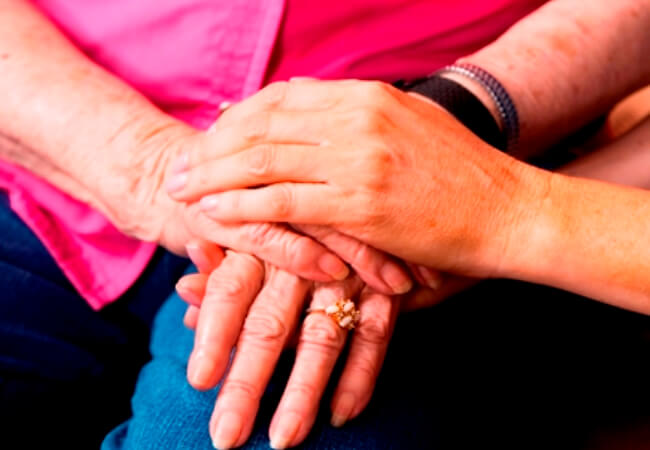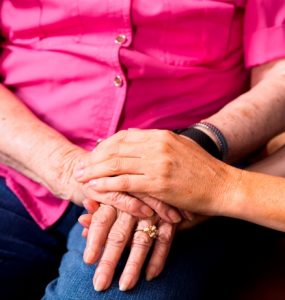
Jul 06, 2016
The Most Invisible Family Caregivers
 Do you know anyone who supports a family member, neighbor or friend with mental health issues? Chances are you do. But it’s likely you don’t know you do.
Do you know anyone who supports a family member, neighbor or friend with mental health issues? Chances are you do. But it’s likely you don’t know you do.
That’s because people who provide care and support to those with mental health issues are the most invisible of all family caregivers. There are about as many family caregivers of adults with mental illness as there are family caregivers of adults with dementia. Why is that surprising even to us, even though AARP has such a strong focus on family caregiving? And we ourselves have years of experience supporting members of our own families as well.
Who are these caregivers?
According to the most recent research conducted by AARP and the National Alliance for Caregiving (NAC), 40 million adults are family caregivers. Of these, 21 percent (8.4 million) support people with mental illness. An additional 22 percent (8.8 million) care for a person with dementia — but 40 percent of these caregivers (3.6 million) report that the person with dementia also has mental health issues. No matter how you look at it, the number of mental health caregivers is on par with the number of dementia caregivers.
The average mental health caregiver is 54 years old, although they range in age from teenagers to seniors. We both have experiences with mental health, caring for a father and sister with bipolar disorder, a daughter with severe depression and anxiety, and a nephew whose depression led him to attempt suicide three times. Whenever we mention our interest in this topic at work, people begin to open up. Cautiously. One executive describes herself as “a caregiver in utero” because she was born into a family in which her grandmother had schizophrenia. She remembers being 9 years old and trying to make sure her grandmother took her medications. Meanwhile, one of our media people worries about his brother, who has schizophrenia and needs to move to a group home because his mother died. And a telecommuter hopes her son’s new medication will help control his behaviors better.
Why is it so hard for these mental health caregivers to share their stories? Because mental illness carries enormous stigma. Family members want to protect their loved one from stereotypes and potential discrimination. Or they may be embarrassed themselves. In fact, half of them say it is difficult to talk about their family member’s illness with others. They feel alone.
That dynamic is not just anecdotal but is confirmed in new research conducted by NAC in partnership with Mental Health America and the National Alliance on Mental Illness (NAMI). The report describes how these caregivers constantly feel they are “on pins and needles” — a phrase that gives this seminal work its very title.
What do these caregivers do?
The report finds that mental health caregivers spend an average of 32 hours a week providing support, compared to 24 hours that the average caregiver spends. That is a whole eight-hour workday more. And the duration of their caregiving is more than twice as long (nine years compared to four). They help with medications, shop, make meals, arrange transportation, manage paperwork, search for services, make appointments — and more. Half say that the care recipient is completely or significantly dependent on them for financial support. Half. It is no wonder that they report higher levels of financial strain than non-mental health caregivers. And 3 out of 4 report high levels of stress.
This group of caregivers faces enormous challenges navigating health and social systems. First, the journey to an accurate diagnosis takes an average of 12 years. Second, they have trouble finding even basic care from a clinician with mental health expertise, or at least one with a basic understanding. And then if they are fortunate to find such a clinician, half are told that they cannot communicate with him or her. This is particularly true for parents caring for an adult child, with 8 out of 10 excluded from conversations about care. Thus, they are largely left out of care conversations, get no education or guidance on how to care for their family member (60 percent, according to the “On Pins and Needles” report), and have great difficulty finding the right medication and dosage that will help (54 percent). They feel anxious, frustrated and isolated.
How can you help?
First, be open to those around you who are supporting a person with mental illness. Let them know they are not alone. Encourage them to visit the National Alliance on Mental Illness and connect with others. Point them to the full report, “On Pins and Needles”.
Let them know they can talk with mental health professionals, with permission from their family member. HIPAA (the Health Information Protection and Accountability Act) does not automatically preclude care conversations. Together, the care recipient, family caregiver and mental health professional can negotiate what will work best for all.
Finally, encourage them to share their caregiving story with AARP. Talking about their experience may help reduce stigma and isolation, and help others better understand and support the critical work of caring for adults with mental illness.
This post was originally posted on the AARP Public Policy Institute blog”Thinking Policy.”
